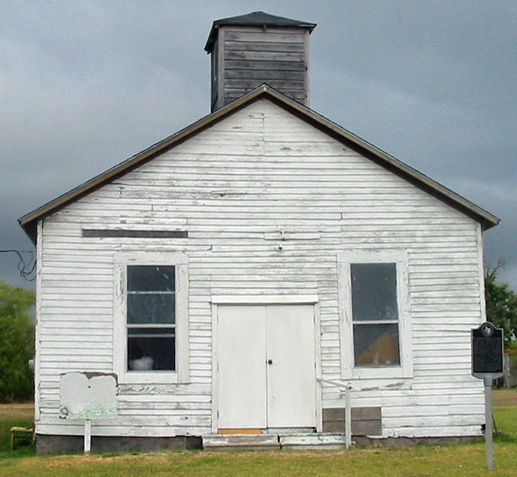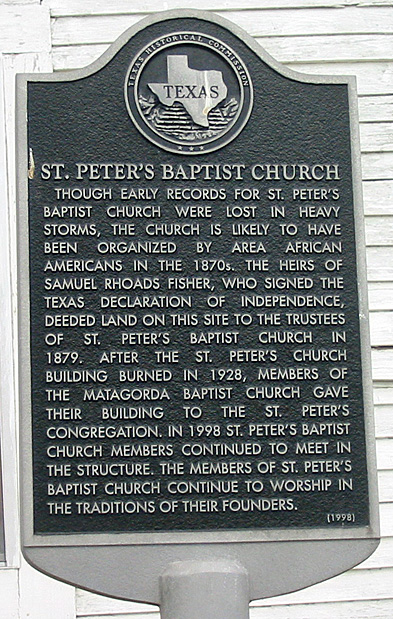|
|||||
|
|||||
|
By Elvin Holt [Abstracted from the marker dedication speech.] Until fairly recently, historic preservation was not a priority in African American communities. Consequently, many historically significant structures and sites have been lost to development or neglect, Fortunately, the 1980s marked the beginning of a movement to preserve our African American heritage, especially large urban centers. In larger cities such as Dallas and Fort Worth, preservation organizations are quite active. For example, a group called Black Dallas Remembered, Inc. was established in 1983 to preserve and document the history of African Americans in Dallas. Members of this organization conduct extensive research to retrieve and record information about Black Dallas, and they are actively involved in efforts to preserve historically significant structures and sites built or developed by African Americans in Dallas. Through their efforts, the Pythian Temple and Booker T. Washington High School are now designated as Dallas Historic Landmarks. In 1989, Black Dallas Remembered began working to preserved the Freedmanís CemeteryÖ My purpose in reviewing the development of an appreciation of the importance of historic preservation in black communities is to place todayís marker dedication within its proper historical and cultural contexts. By dedicating this historical marker, Matagorda joins a national movement to preserve significant sites and structures that reflect the history and heritage of African Americans. To be sure, we are here to celebrate local history, but that celebration should not be seen in isolation, for it is just as important as historic preservation efforts in Dallas or Savannah, Ga. This recognition of the historical significance of the St. Peterís congregation teaches a lesson that everyone committed to historic preservation needs to learn. For too often, we tend to overlook small, unassuming institutions like St. Peterís and focus on the large, architecturally impressive structures that serve elite constituencies. Today we can see that small congregations like St. Peterís also have a story to tell and a legacy to honor. And certainly, St. Peterís has played an important role in the life of the Matagorda community. Historically, the church and the school were the two most highly regarded institutions in the black community. Churches like St. Peterís offered opportunities for spiritual uplift and social interaction. Moreover, churches gave members a chance to develop leadership skills that could be used to promote the interests of the local black community in the secular arena. Black churches stressed the value of literacy by encouraging members to become Bible readers. And long before welfare programs were available, black churches like St. Peterís maintained benevolence societies that provided emergency financial assistance for members and non-members alike. St. Peterís is a cultural and religious institution that has helped shape the lives of countless men, women and children. It stands as a testimony to the determination and perseverance of the founding members and the generations that followed them. I am particularly happy to be a part of this marker dedication program because I have strong family ties with St. Peterís My great-grandfather, Frank Holt, his wife Julia, and their children were members of this congregation. Also, my grandmother, who grew up in the Cedar Lane Community and married Alvin Godfrey Holt, came to love Matagorda; in fact, she visited Matagorda frequently. My grandfatherís brother, the late Rev. John Holt, served as pastor of St. Peterís for many years. His wife and daughter, Mrs. Wilma Holt and Mrs. Carolyn Sue Holt Boulden, respectively, remain active members and supporters of St. Peterís. I cannot forget Mrs. Delores Holt, wife of my cousin, George A. Holt, Sr., who has given many years of dedicated service to St. Peterís. Then there are the Lee and Gartica families. Mrs. Joy Lee and her children have been an asset to St. Peterís over the years. Her daughter, Bettye Lee Dawson and I were classmates at Hilliard High School. Likewise, Rev. Garticaís family has a long history of service to St. Peterís. Although we were in different grades, Rev. Gartica and I were also students at Hilliard High School. I am sure there are other families and individuals who have helped to keep the St. Peterís heritage alive. This historical marker could not have been possible without the hard work and faithful service of families like the Garticas, Lees, Holts, Ludingtons, Greens, Fishers, Alexanders, Pattersons, Lewises, etc. These families and their descendants should take special pride in the recognition that this historical marker brings to this hallowed ground. As I close my remarks, I would like for you to reflect for a minute on the name that the founders chose for their church. Surely, if they had just wanted to name the church in honor of a saint, they had a long list of names from which to choose: St. Matthew, St. John, St. Mark, St. Luke, St. James, just to name a few. But their decision to call their church St. Peterís seems perfectly logical when we consider their environment. According to the book of Matthew (16:17-19), Jesus gave Simon the name Peter, which is the Greek translation of an Aramaic word which means ďstone or rock.Ē Also, the scripture identities Peter and his brother Andrew as poor fishermen. In a community in which fishing was an important resource and means of survival, St. Peterís seems to be an excellent name for a place of worship. Moreover, Peterís association with the symbolic rock must have had special appeal for the organizers who undoubtedly wanted to build an institution that would be as permanent and enduring as a rock. I am delighted that we are here to honor the memory of our founders, even as we also pay tribute to the present pastor and congregation who labor to pass on their heritage to the next generation. Also, I want to thank Mrs. Mary Belle Ingram and the Marker Committee for the many hours of hard work that they devoted to this project. Mrs. Ingram deserves special appreciation for conducting the research and writing the narrative for the marker application.
November 15, 1998 |

